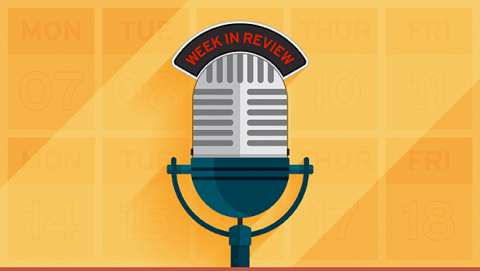In this news roundup for IT leaders, we bring you several articles about the CIO’s role and priorities that caught our attention this week.
CIO priorities: How to set goals that matter [ZDNet]: Technology is changing faster than ever, making it harder for CIOs to ensure they are setting the right priorities to help their business succeed. In this article, Mark Samuels asks several IT leaders to share their best advice for goal setting in a digital age. For instance, Omid Shiraji, interim CIO at Camden Council, shares his two approaches to goal-setting: “First, he distills the priorities of the organization. ‘My job is to speak with business executives, identify their priorities, and then play those objectives back to my team,’ he says. Second, Shiraji identifies which senior IT professionals in his department own those priorities: ‘I only describe the desired outcomes -- how my team gets there is up to them,’ he says.”
Brilliant future or slow decline? Digitization changes the CIO role [InformationWeek]: Andrew Horne writes in a contributed article for InformationWeek: “Digital has become the way effective business leaders meet their strategic objectives and operate day-to-day, rather than a separate initiative. This shift has implications for CIOs. It means that their role will now be shaped by the digital ambitions and abilities of the rest of the corporate leadership team, and as others’ ambitions and abilities change, so will those of the CIO.” Horne describes three emerging career paths for the CIO: Digital Evangelist, Modernizer, and Productizer and how CIOs can adopt these new roles.
How to make your IT department more valuable: 4 stages of success [TechRepublic]: Alison DeNisco recaps a talk by Dan Roberts, CEO of Ouellette & Associates Consulting, at the 2017 Midmarket CIO Forum in which he explained the four-level IT maturity curve. At the bottom of the scale is “IT supplier,” or a basic service provider to the business, all the way to “innovation anticipator,” where most CIOs are aiming to be. “The innovative anticipator is a relatively new stage in the IT maturity curve. These IT shops deliver game-changing value to their organization by bringing new ideas and innovations that help the company disrupt competitors, and drive new revenue streams or customer experiences, Roberts said. ‘At this level, you're not in the first meeting – you're driving the first meeting,’ he added.”
CEOs: Five reasons your startup needs a CIO [Forbes]: Alvina Antar, CIO of Zuora, writes, “CIOs are often not hired in the early stages of the company. In fact, very few pause to think of a CIO until there’s a dire need. While there’s no doubt that CTOs and CFOs are critical, CIOs have an equally important role to play.” She makes her compelling argument by providing five reasons to bring in a CIO from the very start. For instance, Antar points out, “Technology implementation isn’t static. It’s constantly evolving and requires continual investment ... A CIO will focus on speed and agility, guarantee investments are maximized to their full potential and keep pace with technology advancements.”






